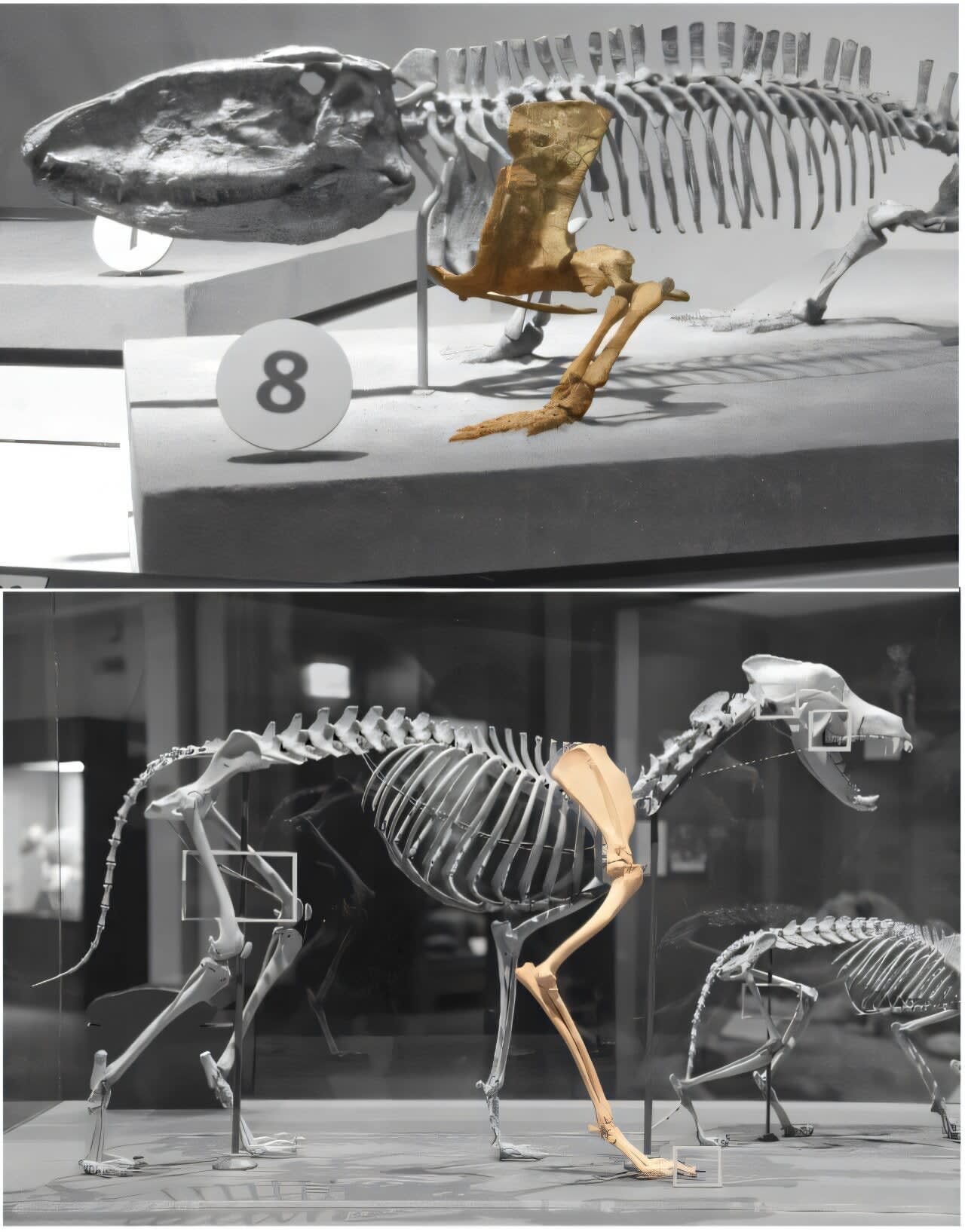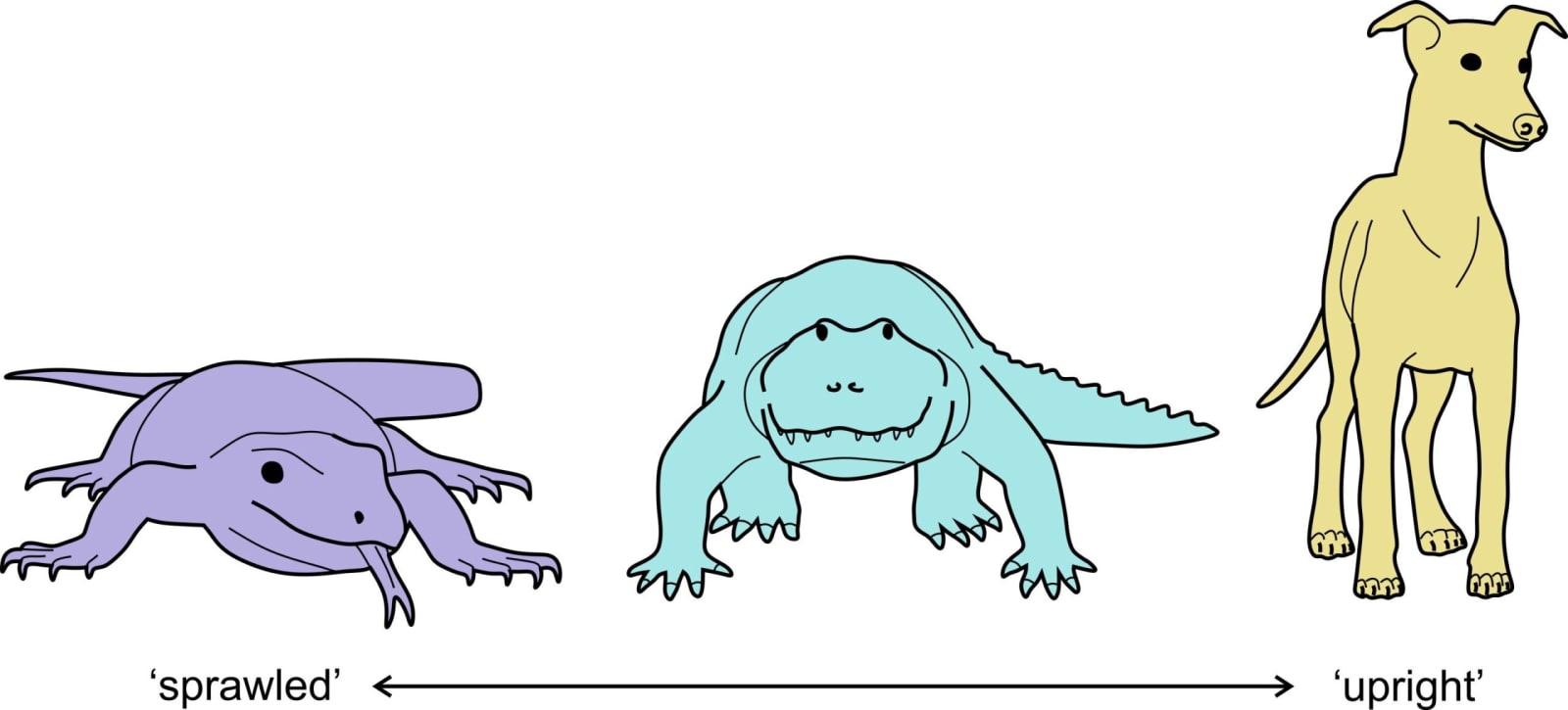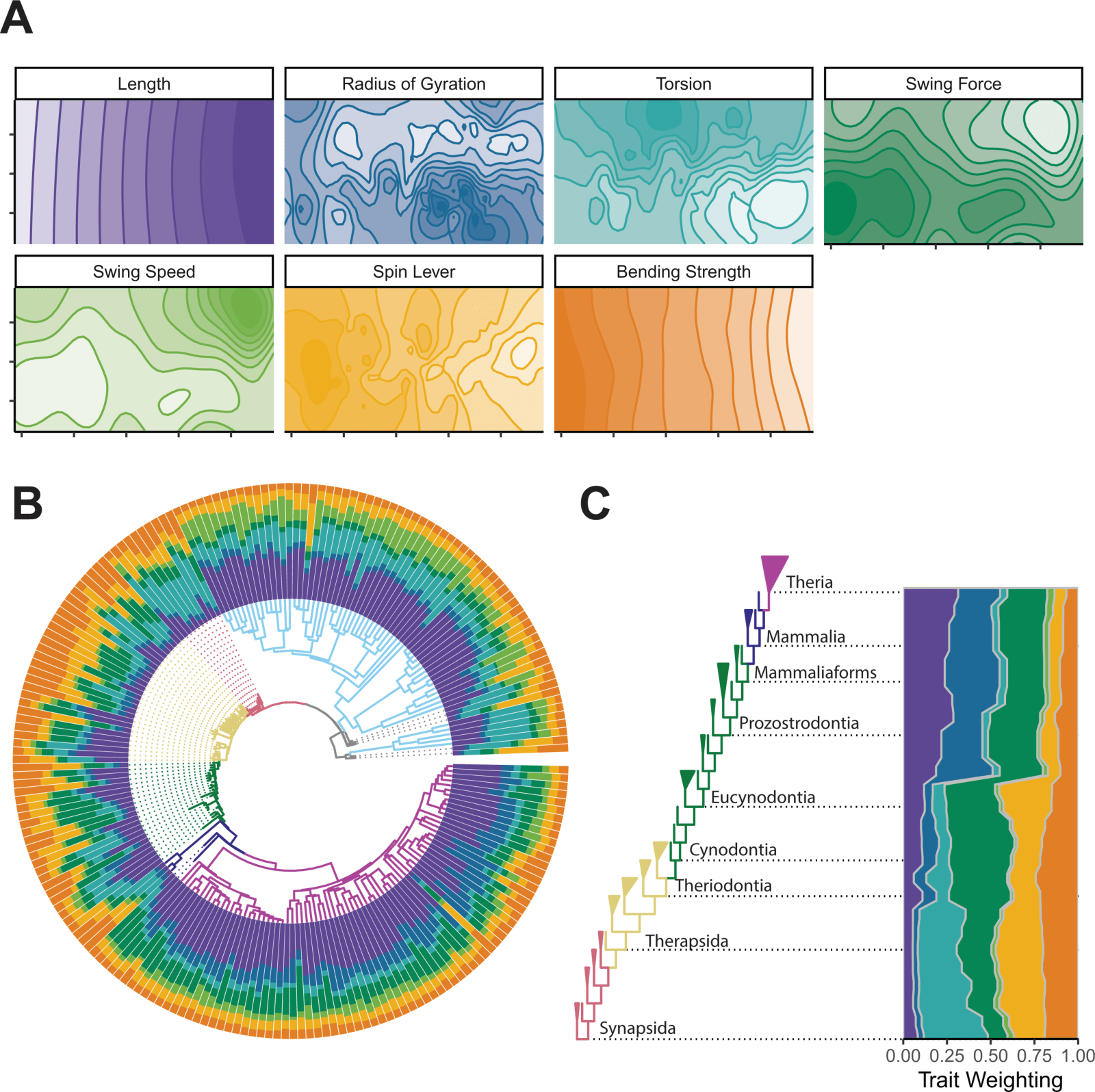Throughout the extensive history of life on our planet, one of the most significant milestones occurred when our far-off predecessors began to stand upright—physically. The manner in whichmammalsStand and walk today, with limbs positioned neatly beneath the body, was not always the standard.
Long ago, before cats, dogs, and humans came into existence, our early ancestors moved in a distinct manner. Their limbs extended sideways from their bodies, much like the way contemporary reptiles such as lizards or crocodiles move. This change in body position—from a sprawled stance to an upright one—played a crucial role in forming the animals that exist today.
For many years, researchers assumed this transition occurred along a straightforward, linear route. It was believed that the first members of the mammal lineage gradually developed from a sprawling posture to a more semi-sprawling stance, eventually leading to upright forms similar to those found in today’s mammals. However, a revolutionary study inPLOS Biologynow presents a different narrative—one that is more intricate, more unexpected, and significantly more thrilling.

A New Perspective on an Old Enigma
Headed by Dr. Robert Brocklehurst, a former postdoctoral fellow inDepartment of Organismic and Evolutionary Biology at Harvard University, the research explores the structure of the upper arm bone—the humerus—across a wide variety of ancient and modern animals. The team analyzed over 60 fossil samples from non-mammalian synapsids, a group of creatures that evolved into mammals, as well as 140 living species, including reptiles, amphibians, and mammals.
Rather than a smooth transition, they encountered an uneven evolutionary path marked by numerous changes and deviations. “The evolution of mammals has typically been described as a sequence of stages from sprawling, to semi-sprawling, to upright,” Brocklehurst noted. “However, what we found was a more complex and non-linear evolutionary development throughout the history of mammals.”
The notion that early synapsids moved similarly to lizards or crocodiles isn’t entirely accurate. The fossils revealed a different narrative. The first members of this group, commonly referred to aspelycosaurs, had an unusual, intermediate style of movement—somewhat similar to reptiles, but not quite like modern mammals. Their stance was distinctive, neither completely sprawled nor upright, indicating a unique method of movement that is no longer present.
Related Stories
・Discovery of a royal tomb reshapes understanding of Maya history
・Titanoboa: The enormous 45-foot serpent that dominated the ancient world
Assessing Bones to Comprehend Movement
To discover how these animals moved, the team employed cutting-edge methods developed in Professor Stephanie Pierce’s laboratory, also located at Harvard. Rather than depending on conventional bone measurements, they constructed detailed3D scansof the upper arm bone and used them to determine factors such as bone length, the way muscles exerted force on the bone, and the degree of twisting along its length, a characteristic referred to as torsion.
“By linking bone shape and limb mechanics with posture, we could assess how effectively the fossil bones were adapted for particular functions, such as walking upright versus sprawled,” Brocklehurst explained. This approach allowed the researchers to categorize each bone within what they referred to as a “functional adaptive landscape,” akin to a topographic map. The peaks on this map indicated regions of high performance for specific postures, whereas the valleys represented areas of lower performance.
What they discovered was not a consistent progression toward the posture of modern mammals. Rather, posture changed in various directions throughout time. Early synapsids did not slowly move toward an upright gait. There were abrupt changes, setbacks, and unique body structures. Some species advanced toward more mammal-like postures, only toevolve away from them later.

Evolution’s Winding Path
The information indicates that posture and forelimb function were far more adaptable than previously thought. Evolution did not proceed in a linear fashion; instead, it spread out like a tree, with various groups of synapsids experimenting with different forms of locomotion and movement.
Professor Pierce, the study’s lead author, put it perfectly: “The journey toward standing upright wasn’t a straight path—the ancestors of mammals weren’t simply steps on a ladder with modern mammals at the peak.”Mammals have been evolvingand spreading into numerous distinct niches and environments throughout their history, with their postures demonstrating this diversity.
One particularly significant fossil, which is closely related to marsupials and placental mammals, displayed characteristics in the humerus that are consistent with modern upright locomotion. This discovery pushes back the timeline for when upright posture developed considerably compared to previous assumptions. Earlier theories suggested that upright walking originated much earlier in the history of mammals.

This fossil, however, indicates that the transformation occurred nearer to the emergence of true mammals. “Our research disputes the notion that posture evolved slowly and early,” Pierce stated. “Rather, it demonstrates that an upright stance and movement were a later evolutionary development, not an early characteristic of the mammalian lineage.”
Innovation in Every Limb
To contrast numerous animals, spanning fromancient fossilsRegarding living mammals, the team faced a significant challenge: how can you measure and compare bones that vary greatly in shape and size? Conventional techniques were ineffective, so the team came up with innovative solutions.
They redesigned a software tool that was initially created for another purpose, transforming it into a novel “slice-based” method for identifying landmarks. This technique allowed them to precisely capture thecomplex shapes of bonesacross different species. Magdalen Mercado, a former undergraduate student in Harvard’s Integrative Biology program, was instrumental in this aspect of the research. As part of her senior thesis in Pierce’s lab, she contributed to collecting and examining the extensive dataset required for the study.

The initiative also ties into a long history of evolutionary biology at Harvard. Scientists at theMuseum of Comparative ZoologyFor instance, Alfred Sherwood Romer and Farish Jenkins, Jr., investigated comparable issues regarding posture over a hundred years ago. Using modern tools, scientists today can examine these traditional questions and achieve fresh understanding.
Co-author Kenneth Angielczyk from theField MuseumIn Chicago, it was noted that synapsids were not merely early reptiles. “Our research demonstrated that the limbs of most synapsids operated in a different manner compared to those of modern reptiles. They are not simply replicas of reptiles, but unique creatures in their own right, somewhat distinct from any species that exists today,” he stated.
Toward a Deeper Understanding
This initiative marks the initial major attempt to analyze the posture of mammals using in-depth biomechanics. However, this is not the end of the journey. The research group is currently working on more sophisticated models of joints and muscles to investigate precisely how these ancient creatures moved. As Brocklehurst stated: “Grasping how mammals evolved to walk upright goes beyond bones; it involves revealing the dynamic history of life across Earth.”

This study alters the way scientists understand the development of mammalian movement. The path was not a straightforward ascent, but rather a broad and branching route, influenced by various environments, body structures, and lifestyles. Somewhere along this path, the mammals we recognize today—bats,whales, moles, humans—found their balance.
Note: The article mentioned above was provided byThe Positive Aspect of News.
Like these types of uplifting stories? GetThe Positive Aspect of News’ newsletter.







